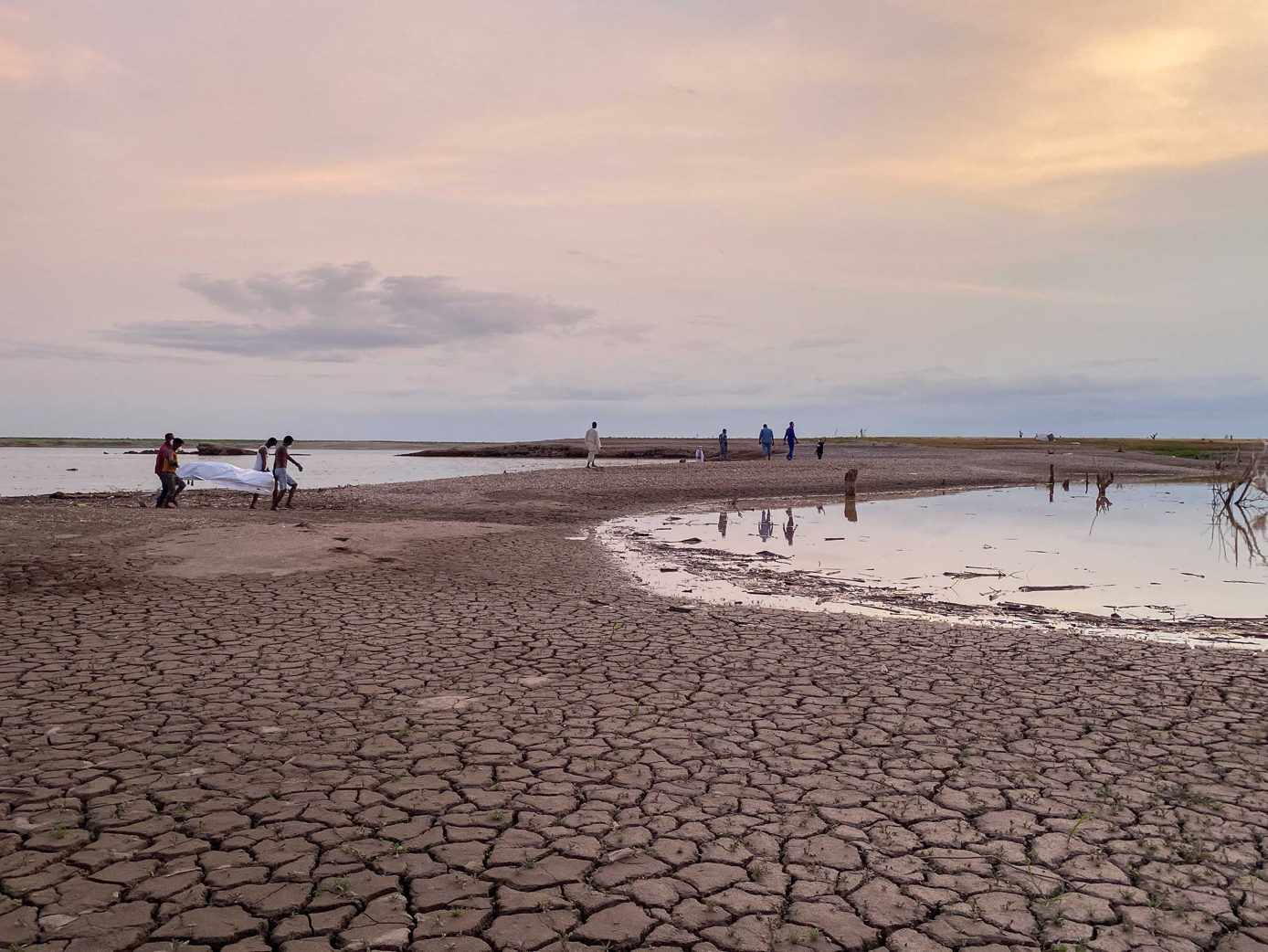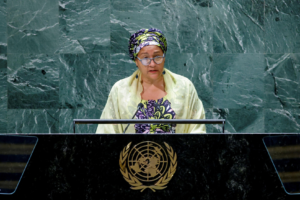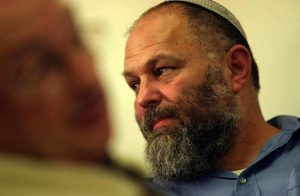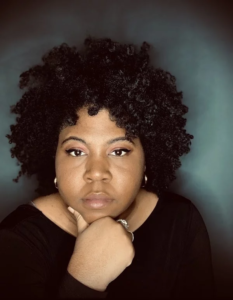The ghostly outlines of limbs emerge through the mist along the Setit River in eastern Sudan. As the river’s path narrows, the drifting bodies become wedged on the silty clay bank and their forms appear more clearly; men, women, teenagers and even children.
The marks of torture are easily visible on some, their arms held tightly behind their backs.
On a trip to Wad El Hilou, a Sudanese town near the border with Ethiopia, a CNN team counted three bodies in one day. Witnesses and local authorities in Sudan confirmed that in the days after the team’s departure, 11 more bodies arrived downstream.
Evidence indicates the dead are Tigrayans. Witnesses on the ground say the bodies tell a dark story of mass detentions and mass executions across the border in Humera, a town in Ethiopia’s Tigray region.
CNN has spoken with dozens of witnesses collecting the bodies in Sudan, as well as international and local forensic experts and people trapped and hiding in Humera, to reveal what appears to be a new phase of ethnic cleansing in Ethiopia’s war.

Humera is one of many towns involved in the conflict that has ravaged the 112 million-strong east African country since the Ethiopian government launched an offensive in the country’s northern Tigray region in November 2020. Despite Prime Minister Abiy Ahmed’s initial declaration of victory in late November, the region is still wracked by fighting and CNN has previously reported on the many atrocities including torture, extrajudicial killings, and the use of rape as a weapon of war.
At the end of June this year, the balance of power shifted suddenly as Tigrayan forces recaptured the regional capital, Mekelle, and the Ethiopian government began withdrawing troops from the region. The fighting continued, however. In mid-July, Tigrayan forces announced a new offensive to recapture areas taken by the Ethiopian government.
This new offensive, witnesses told CNN, was what prompted the government forces and militia groups holding the northern town of Humera, close to the border with Eritrea and Sudan, to launch a new phase of mass incarcerations of resident Tigrayans.
CNN’s investigations indicate that the ethnic profiling, detention and killing of Tigrayans bears the hallmarks of genocide as defined by international law, drawing statements of concern from UK and US officials.
‘We’re told to look out for the bodies’
In recent weeks, a community of Tigrayans living in the Sudanese town of Wad El Hilou, 65 kilometers (40 miles) downstream from Humera, has assumed the role of excavators and grave diggers for the bodies drifting down the river known in Sudan as the Setit and in Ethiopia as the Tekeze.
It is arduous and distressing work. The stench from the bodies fills the air as they first extract each corpse from the riverbed and then dig new graves for them, before performing the burial rites.
Gebretensae Gebrekristos, known as “Gerri,” is one of the community’s leaders; he helps coordinate the grim task with a solemn determination. In total the community estimates at least 60 bodies have been found so far. He explained how the group is certain the bodies are Tigrayans from Humera.
“We get calls from people in Humera that witnesses — often escaped detainees — saw people marched down to the river in one of the facilities and heard gunshots, or that a number of people were taken by soldiers from the detention facilities and never returned. We’re told to look out for their bodies coming down the river.”
The bodies first appeared in Sudan in July when the river was at its highest volume due to the rainy season. Sudanese water engineers told CNN the speed of its flow then would enable the bodies to drift from Humera to Wad El Hilou in approximately two to three hours. Wad El Hilou is a natural pinch-point in the river’s path — and so, when the bodies arrived, they floated towards the banks.
According to Gerri, his community usually finds the exact number of bodies it has been told to expect.
Sixteen-year-old Natay and 17-year-old Gebrey, whose names have been changed for their safety, are among the Tigrayans who said they fled prison camps in Humera. Now in Wad El Hilou, they confirmed to CNN that they heard reports of men, with their hands tied, being marched in single file towards the Humera riverfront, to the area between St. Mary’s and St. Michael’s Church. The boys both say they heard shots ring out and the men did not return.
Natay said he remembered feeling paralyzed: “I was so fearful, thinking that they would kill me and throw me [in] too.”
Sudanese authorities in Wad El Hilou have filed police and coroner reports for each body found in their territory, documenting evidence of the extensive torture and “execution-style” bullet entry wounds found on many of the bodies, the authorities told CNN. Both local Sudanese authorities and forensic experts say all the bodies retrieved so far were likely dead before they hit the water.
In a statement issued via US public relations firm Mercury, the Ethiopian government said it was investigating the allegations. “In light of several inconsistencies in the allegations, we are working with the relevant authorities to gather evidence and will prosecute any individuals found to have committed crimes to the fullest extent of the law,” a spokesperson said.
“The government is keen to reiterate our desire to ensure a peaceful resolution to the conflict in Tigray and is actively working to secure a ceasefire.”
Following CNN’s investigation, a US State Department spokesperson said the agency is “deeply alarmed at the escalating violence in northern Ethiopia” and noted it continues to formally probe whether “atrocity crimes” have been committed in the region.
“Those responsible for human rights abuses and violations, as well as atrocities, must be held accountable through independent, transparent mechanisms,” the spokesperson told CNN, adding that the department “has a law and fact-based review underway on whether atrocity crimes have been committed in Tigray.”
‘Everyone was sick’
For so many of the Tigrayans in Sudan, these bodies could have been people they knew. Many have fled from Humera and still have families there.
Temesgen, 24, and Yonas, 25, say they escaped together from a warehouse in Humera, called Enda Yitbarek, which they describe as being used as a makeshift mass detention camp for thousands of Tigrayans. CNN has changed their names for their safety. They were both imprisoned for just over two weeks.
“I was playing around my house, then they collected me and took me because I am Tigrayan,” Temesgen recalled. “We didn’t do anything, they just collected me and detained me.”
Inside the warehouse, people were crammed together on the floor without rooms or partitions to create privacy, he said.
“They weren’t providing us food and we didn’t even have access to the toilet,” Yonas said. “Some people were toileting inside the warehouse.”
For Temesgen the real horror was the lack of medical assistance. “Everyone was sick with flu and not getting medical help. They weren’t sending us to hospital,” he said.
Former detainees described to CNN prisoners of all ages squeezed tightly together — from mothers with young children to teenagers to men in their 70s.
Temesgen and Yonas say they escaped while on a rare toilet break permitted by the guards, and made the journey to Sudan. They both talked of multiple prison camps dotted around the city of Humera.
CNN spoke to dozens of other escapees from these camps and, based on their accounts, estimates there are up to nine locations where it is thought thousands of Tigrayans are being detained.
Ethnic profiling
Tigrayans still inside Humera told CNN that they live in constant fear of being detained or killed. They spoke of brazen ethnic profiling whereby residents of Tigrayan ethnicity are targeted and those of other ethnicities are safe, particularly those of the Amhara ethnicity; militia from Amhara have fought alongside Ethiopian government forces in Tigray.
People of mixed ethnicity face an uncertain fate; residents told CNN that an Amhara ID card can suffice but to be seen socializing with Tigrayans will put someone at risk nonetheless.
Alem, whose name has also been changed for security reasons, is half-Tigrayan but has a non-Tigrayan ID card and has been helping Tigrayans hide in his home in Humera while the arrests continue. Relatives abroad have urged him to flee, but he insists it’s his duty to stay and help those who are targeted.
Rahel, not her real name, is also Tigrayan but has a non-Tigrayan ID card and says she has been visiting friends and relatives in the prison camps despite the questions posed by guards. She is horrified by the conditions for those detained.
“They can’t move, they are not getting enough sanitation, no food, no water and no medicine. If they feel sick and die, no one cares. They are hungry and thirsty. How could they feel good thinking it’s their turn the next day, knowing their friends were killed yesterday? The guards don’t care about life,” she said.
People in Humera who spoke to CNN repeatedly mentioned the disappearances of members of the Tigrayan community. Those still free assumed they were detained in the camps, but those who escaped from the prisons told CNN that people were frequently summoned by guards and would never return. Others spoke of rare sightings of bodies being dumped into the river.
Across the water in Sudan, Yonas recalled the disappearances from the Enda Yitbarek warehouse.
“They weren’t torturing us but they were taking prisoners often at night and they never came back,” Yonas said. “We don’t know whether they killed them or not, but after they took them they never came back, and their families reported their disappearances.”
Residents of Humera with whom CNN spoke firmly believe the bodies arriving in Wad El Hilou are from their town. Several are in regular touch with those who escaped across the border to Sudan and when the bodies began arriving, news spread fast.
One man has been identified locally as Misganawu, a well-known barber in Humera. ”He had two nicknames, Totit and Gundi,” Alem recalled. “I knew Totit very well when he was working in Humera in that hairdressing shop. He was born and raised in Humera.”
‘Intent to kill’
Dr. Khalid Mohamed Khalid, a Sudanese forensics and identification expert, is best known for leading an investigation that implicated Sudanese security forces in the murder of protesters during the country’s 2018 revolution. Now, far from his pristine examination table, he’s conducting his investigations on the banks of the Setit river.
“We were able to take six newly arrived bodies straight out the water and examine them. We found clear signs of a systematic manner of torture — aggressive and painful violence with intent to kill. The victims were dead before they hit the water,” he told CNN.
Khlaid is working alongside international and other local forensic experts to produce a report on their findings.
A draft of the report, obtained by CNN, dates the “time of death” of some of the bodies as falling between November 2020 and April 2021, meaning some executions occurred earlier than previously thought and were hidden from the world.
The experts’ examinations were helped by the fact the corpses had effectively been preserved before entering the water, meaning they had not decomposed.
The experts said it was impossible to state definitively at this point whether that preservation occurred naturally — as a result of the environment the bodies were stored in — or whether the bodies were intentionally preserved by their killers.
“The preservation was key to our findings,” Dr Khalid said. “The preservation process takes at least three months [to complete] — and some were in very advanced stages of that process.”
The fact all the bodies were in a similar state indicates they were stored in a similar environment, possibly a storage facility or a mass grave, before being dumped into the river, experts said. Limited areas of decomposition on the victim’s bodies also helped shed further light on what happened after their death. The preservation also helped keep intact wounds, tattoos and other identifiers.
Some of those found had their arms bound tightly behind their backs, in keeping with a torture technique called “tabay.” Several had their hands tied with small gauge yellow electrical wire and bone breakages and dislocations further indicate additional pressure was placed on their bodies before death.
The experts say they are in a race against time to preserve evidence, in case it is needed for potential war crimes prosecutions in the future. They also confirmed the signs of torture apparent to the group in Sudan who’ve been collecting the corpses.
While investigators in Sudan prepare to put forward their findings, Tigrayans and those helping them in Humera face a daily struggle to remain free from arrest and abuse.
And Tigrayans like Gerri, on the other side of the border, mourn and dig shallow graves for the bodies that drift downstream.
Speaking by the first riverside grave he dug, marked with a makeshift wooden cross, Gerri said it pained him to be unable to give them a proper burial.
“To leave your people by the river? Your sister, your brother, not laid properly to rest? When you see that, it hurts you, it hurts your heart, but what can you do? This is what we have been condemned to.”
International scrutiny
During a debate this week in the UK parliament on the humanitarian crisis in Tigray, member of parliament for Dulwich and West Norwood Helen Hayes recently cited CNN’s investigation, saying, “There are sickening accounts of Tigrayans being held in prison camps near the Sudanese border, with reports from Sudan of corpses floating down the Setit river clearly identifiable as Tigrayans and showing signs of torture,” Hayes said.
“This conflict contains the hallmarks of ethnic cleansing and genocide,” she said.
A US State Department review of alleged atrocities in Tigray has been underway since at least late June. Acting Assistant Secretary of State Robert Godec told lawmakers at the time that the “assessment is quite far advanced,” and that the Biden administration had “pushed it at a very accelerated pace.”
“The administration is in full agreement that horrifying atrocities have been committed in Tigray and Secretary Blinken did say in earlier testimony, as you’ve said, that there were acts of ethnic cleansing,” Godec said on June 29.
US Secretary of State Antony Blinken has previously announced sweeping visa restrictions on “certain individuals responsible for, or complicit in, undermining resolution of the crisis in Tigray” and the US sanctioned the chief of staff of the Eritrean Defense Forces for his connection to “serious human rights abuse committed during the ongoing conflict in Tigray.” The State Department has also “imposed restrictions on foreign assistance for Ethiopia and have brought our defense trade control policy in line with this action,” according to the spokesperson.
“Security assistance programs have been suspended. A planned Millennium Challenge Corporation economic growth ‘threshold’ program also remains on hold at this time,” they said.
However, human rights campaigners and US-based Tigrayan advocates worry it’s not enough, telling CNN they are concerned that there have not been sanctions publicly announced against Ethiopian government officials, and that it continues to be a member of the African Growth and Opportunity Act (AGOA), granting it hundreds of millions of dollars of favorable market access in the US.
Just two weeks ago, United States Trade Representative Katherine Tai “raised the ongoing violations of internationally recognized human rights amid the ongoing conflict and humanitarian crisis in northern Ethiopia” in a conversation with Ethiopia’s Senior Policy Advisor and Chief Trade Negotiator Mamo Mihretu, and said those violations “could affect Ethiopia’s future African Growth and Opportunity Act (AGOA) eligibility if unaddressed,” according to a readout from her office.
USTR did not reply to CNN’s requests for comment about Ethiopia’s future AGOA membership.
The State Department spokesperson said the US government “continues to consider use of the full range of policy tools available in response to the worsening crisis.”




